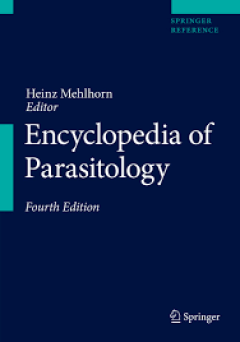Filter by

Veterinary Mycology
This book is a comprehensive overview of the fungi that are clinically relevant for animals and humans. It is divided in three major parts: the first part comprises the history of veterinary and medical mycology, general aspects of morphology, growth, nutrition, reproduction and classification of fungi. In the second part, the etiologic agents of cutaneous, subcutaneous and systemic mycoses are…
- Edition
- -
- ISBN/ISSN
- 978-81-322-2280-4
- Collation
- XIX, 179
- Series Title
- -
- Call Number
- -

Multiple Sclerosis, Mad Cow Disease and Acinetobacter
The aim of this book is to publicise and bring to a wider audience the concept that the cause of two neurological diseases, namely multiple sclerosis (MS) and “mad cow disease” also known as “bovine spongiform encephalopathy” are related through exposure to a common microbe Acinetobacter which is found in human sinuses, on skin and in the soil. An infection is the cause of a neurologica…
- Edition
- 1
- ISBN/ISSN
- 978-3-319-02734-0
- Collation
- XVIII, 200
- Series Title
- -
- Call Number
- -

Multiple Sclerosis, Mad Cow Disease and Acinetobacter
The aim of this book is to publicise and bring to a wider audience the concept that the cause of two neurological diseases, namely multiple sclerosis (MS) and “mad cow disease” also known as “bovine spongiform encephalopathy” are related through exposure to a common microbe Acinetobacter which is found in human sinuses, on skin and in the soil. An infection is the cause of a neurologica…
- Edition
- 1
- ISBN/ISSN
- 978-3-319-02734-0
- Collation
- XVIII, 200
- Series Title
- -
- Call Number
- -

Encyclopedia of Parasitology
Knowledge in the field of parasitology must be kept at a high level and up to date in order to fight a parasitosis as quickly and effectively as possible. This work, one of Springer's renowned and authoritative Major Reference Works, contributes to these goals in several ways. First, it comprises a number of entries, consisting of both in-depth essays and definitions. Secondly, the content has …
- Edition
- -
- ISBN/ISSN
- 978-3-662-43978-4
- Collation
- 463 b/w illustrations, 1180 illustrations in colour
- Series Title
- -
- Call Number
- -

Multiple Sclerosis, Mad Cow Disease and Acinetobacter
The aim of this book is to publicise and bring to a wider audience the concept that the cause of two neurological diseases, namely multiple sclerosis (MS) and “mad cow disease” also known as “bovine spongiform encephalopathy” are related through exposure to a common microbe Acinetobacter which is found in human sinuses, on skin and in the soil. An infection is the cause of a neurologica…
- Edition
- 1
- ISBN/ISSN
- 978-3-319-02734-0
- Collation
- XVIII, 200
- Series Title
- -
- Call Number
- -
 Computer Science, Information & General Works
Computer Science, Information & General Works  Philosophy & Psychology
Philosophy & Psychology  Religion
Religion  Social Sciences
Social Sciences  Language
Language  Pure Science
Pure Science  Applied Sciences
Applied Sciences  Art & Recreation
Art & Recreation  Literature
Literature  History & Geography
History & Geography